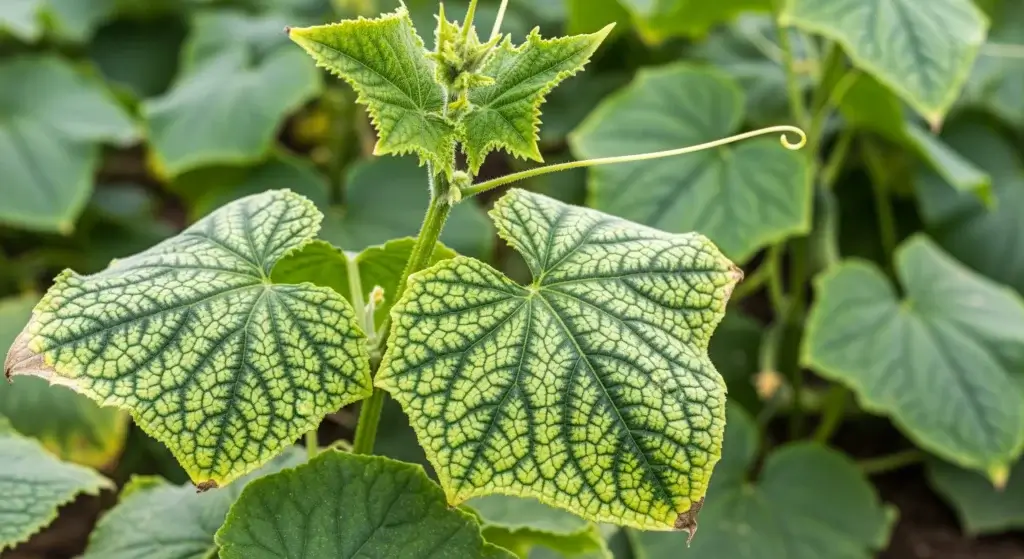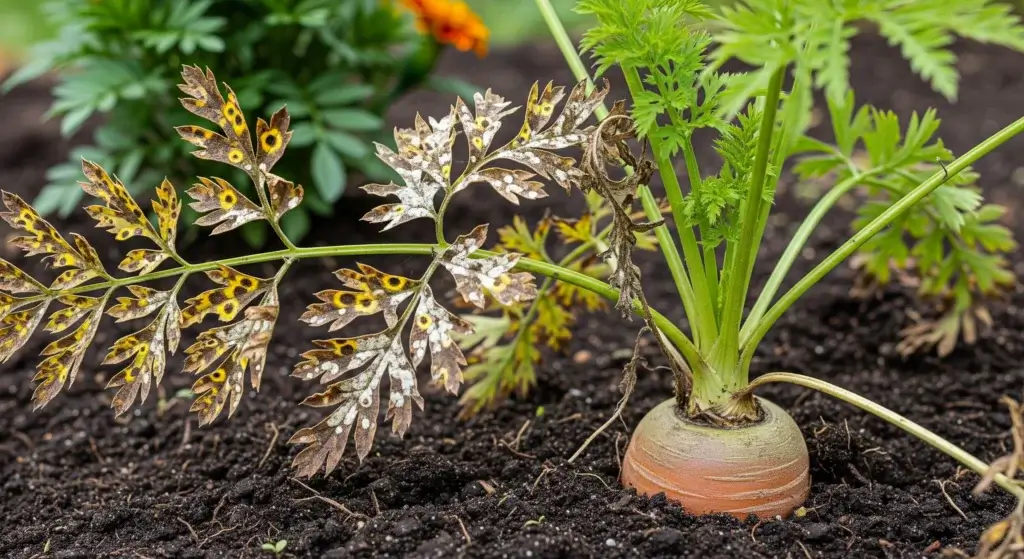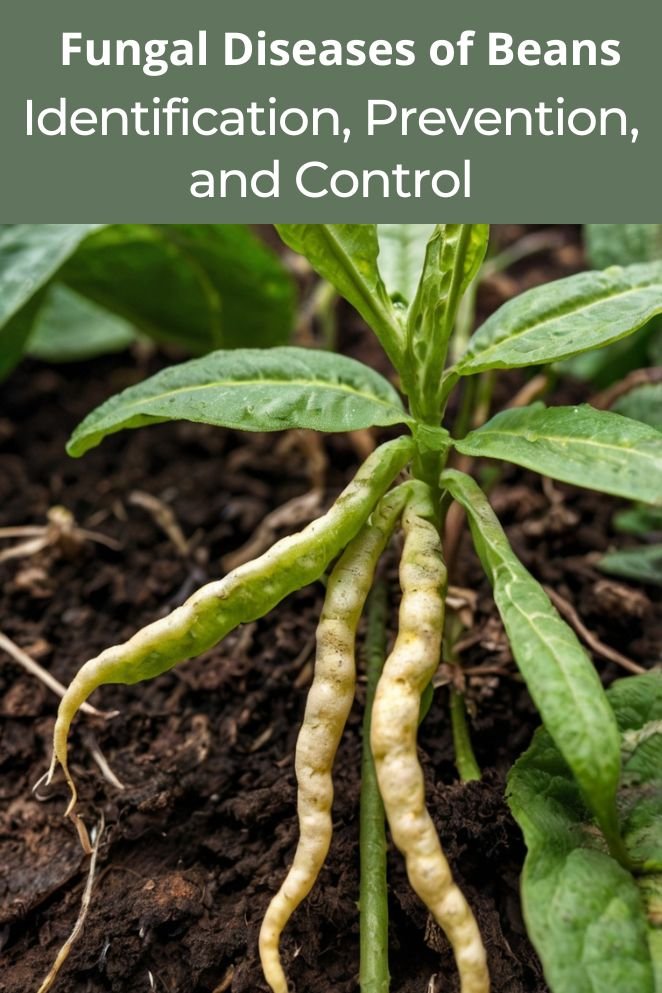
Beans are a staple crop in many parts of the world, providing a valuable source of protein and nutrients for humans and animals alike.
However, bean farmers often face the challenge of fungal diseases, which can significantly reduce yields and affect the quality of the crop.
In this article, we will explore the common fungal diseases of beans, their symptoms, and provide tips on how to prevent and manage them.
Common Fungal Diseases of Beans
Bean plants are vulnerable to several fungal diseases, which can severely impact their growth and productivity.
Here’s a closer look at some of the common fungal diseases affecting beans:
Anthracnose
Anthracnose, caused by the Colletotrichum truncatum fungus, manifests as small circular lesions on bean plant leaves and stems.
These lesions start as watery spots and darken over time, leading to leaf loss and decreased yields.
Anthracnose thrives in warm, humid climates, making it prevalent in certain regions.
- Read also: A Comprehensive Guide: Natural Pesticides for Vegetable Garden
- Read also: Eco-Friendly Pest Control – How To Make a Natural Pesticide
White mold
White mold, caused by the Sclerotinia sclerotiorum fungus, appears as white, cotton-like growth on bean plant leaves and stems.
This growth can spread rapidly, causing extensive damage to the crop and reducing yields.
High humidity exacerbates the spread of white mold, posing a significant threat to bean production.
Rhizoctonia root rot
Rhizoctonia root rot, caused by the Rhizoctonia solani fungus, affects bean plant roots, causing them to rot and decay.
This results in stunted growth and poor yields as the plants struggle to absorb essential nutrients and water from the soil.
Wet, humid conditions provide an ideal environment for Rhizoctonia root rot to thrive.
Bean rust
Bean rust, caused by the Uromyces phaseoli fungus, manifests as small yellow spots on bean plant leaves, eventually turning into rust-colored patches.
This weakens the plants and impairs their ability to photosynthesize, leading to reduced yields.
Warm, humid climates promote the spread of bean rust, posing a challenge to bean growers.
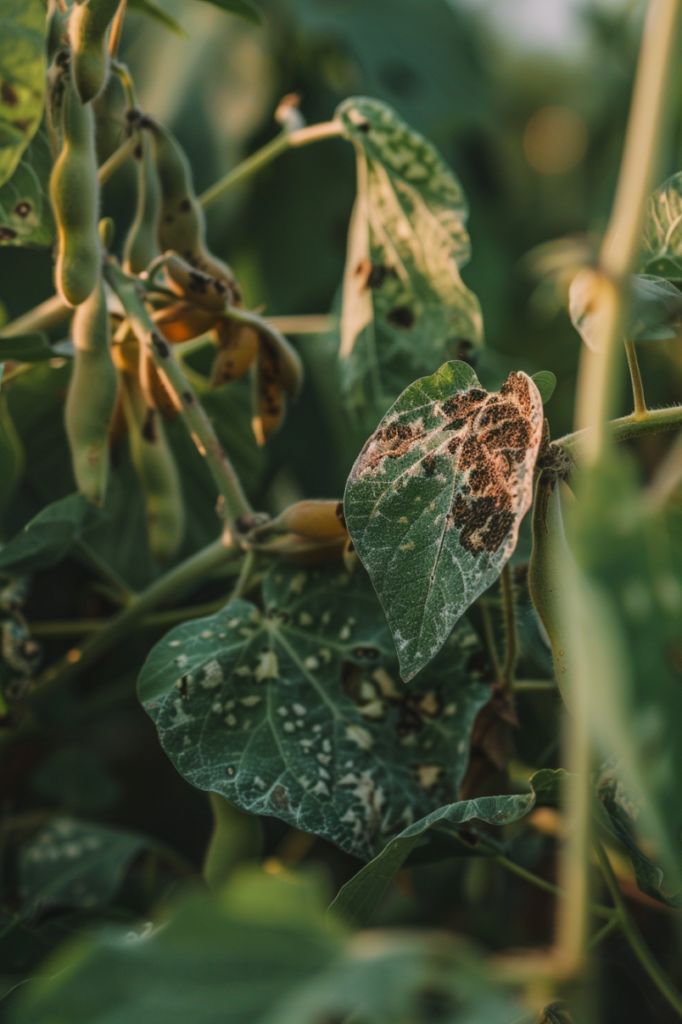
Symptoms of Fungal Diseases in Beans
The symptoms of fungal diseases in beans can vary depending on the specific disease and the stage of growth of the plant.
Some common symptoms include:
Small circular lesions
Keep an eye out for small, circular lesions that appear on both leaves and stems.
These spots may start small but can darken and expand over time, eventually leading to defoliation and reduced yields.
Such lesions serve as a warning sign of potential fungal infections.
White, cotton-like growths
Some fungal diseases prompt the growth of white, cotton-like patches on the leaves and stems of bean plants.
These growths spread quickly and pose a significant threat to the plant’s health and productivity.
Timely action is crucial to prevent further damage and ensure the well-being of your crop.
Stunted growth and root Rot
Fungal infections can also affect the roots of bean plants, resulting in stunted growth and root rot.
This condition hampers the plant’s ability to absorb essential nutrients and water, ultimately leading to decreased yields.
Regular inspection of the roots can help detect any signs of decay or discoloration early on.
Yellowish spots turning rust-colored
Watch for the appearance of small, yellowish spots on the leaves, which may progress into rust-colored patches over time.
This discoloration weakens the plant and interferes with its ability to photosynthesize, potentially impacting the overall yield.
Swift action is necessary to contain the spread of infection and minimize its impact on the crop.
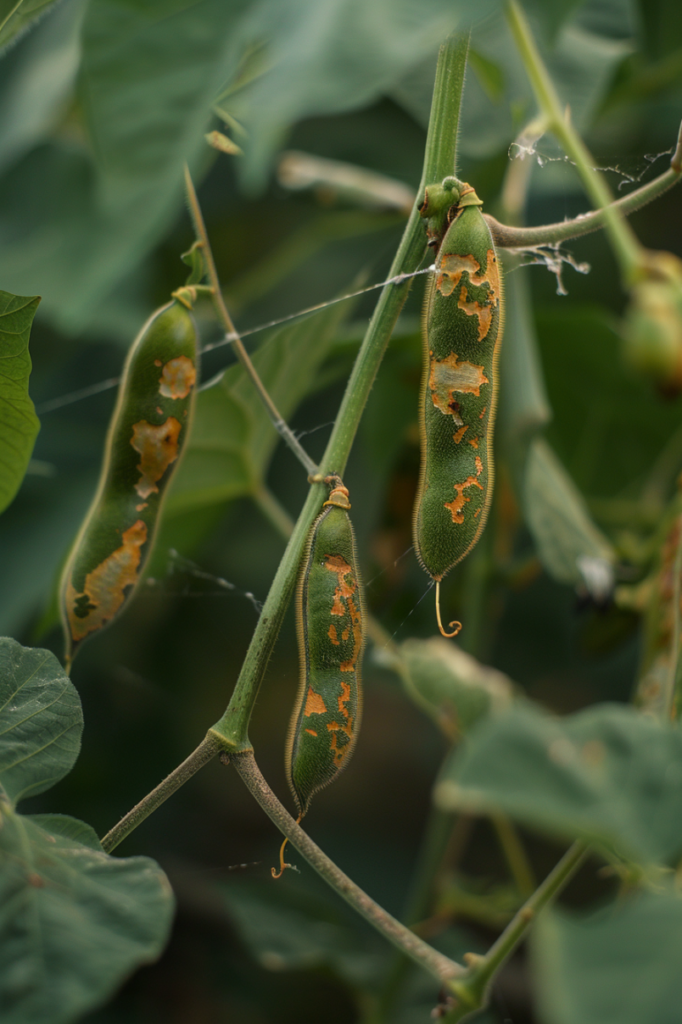
How to Prevent Fungal Diseases in Beans
Preventing fungal diseases in beans is crucial for ensuring a thriving and fruitful crop.
Here are some practical strategies to help you protect your bean plants:
Planting resistant varieties
Opt for bean varieties known to have resistance against specific fungal diseases.
These varieties possess genetic traits that make them less vulnerable to infection, thereby lowering the chances of disease development and enhancing overall yields.
Crop rotation
Avoid planting beans in the same spot year after year.
Rotate your crops to disrupt the life cycle of fungal pathogens and prevent the accumulation of disease-causing organisms in the soil.
By alternating beans with different crops, you can reduce the risk of infection and promote soil health.
Proper sanitation
Keep your garden clean by regularly sanitizing your gardening tools and equipment.
This helps prevent the transmission of fungal spores from infected plants to healthy ones.
By practicing good sanitation habits, you can minimize the spread of disease and improve the overall health of your plants.
Proper watering practices
Steer clear of overhead watering, as it creates humid conditions that encourage fungal growth.
Instead, water your bean plants at their base to deliver moisture directly to the roots while minimizing moisture on the leaves.
By watering correctly, you can reduce the likelihood of fungal infections and maintain optimal plant health.
Spacing plants properly
Ensure adequate spacing between your bean plants to allow for proper air circulation.
Good air circulation helps prevent moisture buildup on plant surfaces, which in turn reduces the risk of fungal diseases.
By spacing your plants appropriately, you create an environment less conducive to fungal growth and infection.
Fungicide application
In severe cases of fungal infestation, applying a fungicide may be necessary to control the spread of disease.
However, fungicides should be used sparingly and only as a last resort after other preventive measures have been exhausted.
Always follow the instructions on the label carefully to ensure safe and effective application
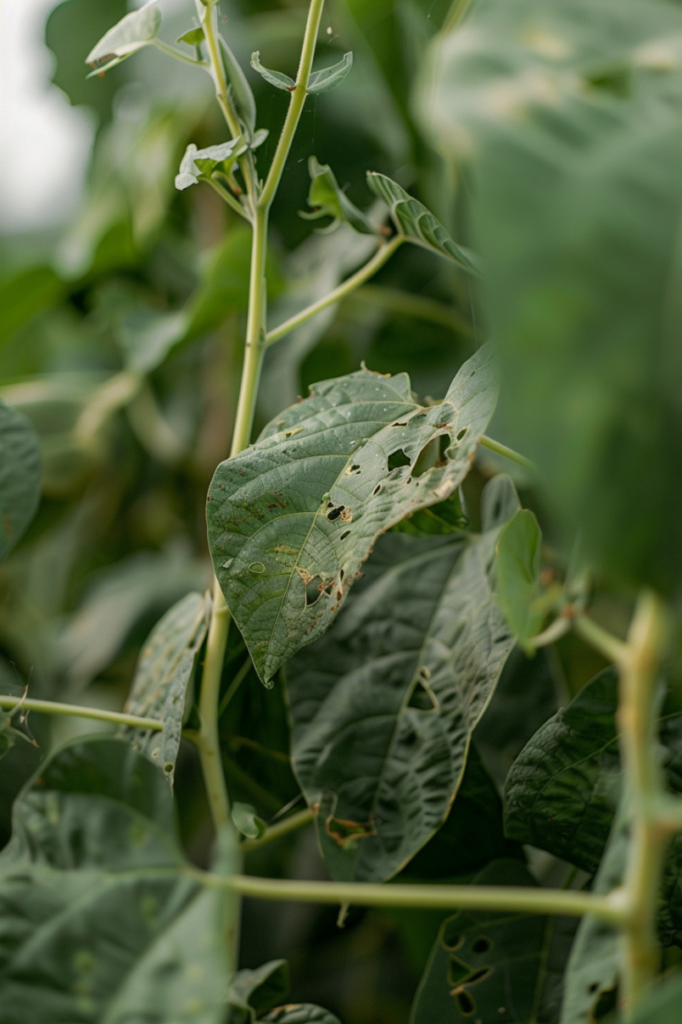
- Read also: Stress-Free Gardening: Top Tips to Protect Vegetables From Pests
- Read also: Pest Damage on Vegetables: A Guide to Identification and Control
Conclusion
Fungal diseases are a significant threat to bean crops, but by understanding the common diseases and taking steps to prevent and manage them, farmers can reduce the risk of infection and improve yields.
By choosing resistant varieties, practicing crop rotation, maintaining proper sanitation, and using proper watering and spacing practices, farmers can help prevent fungal diseases and ensure a healthy and productive crop.

